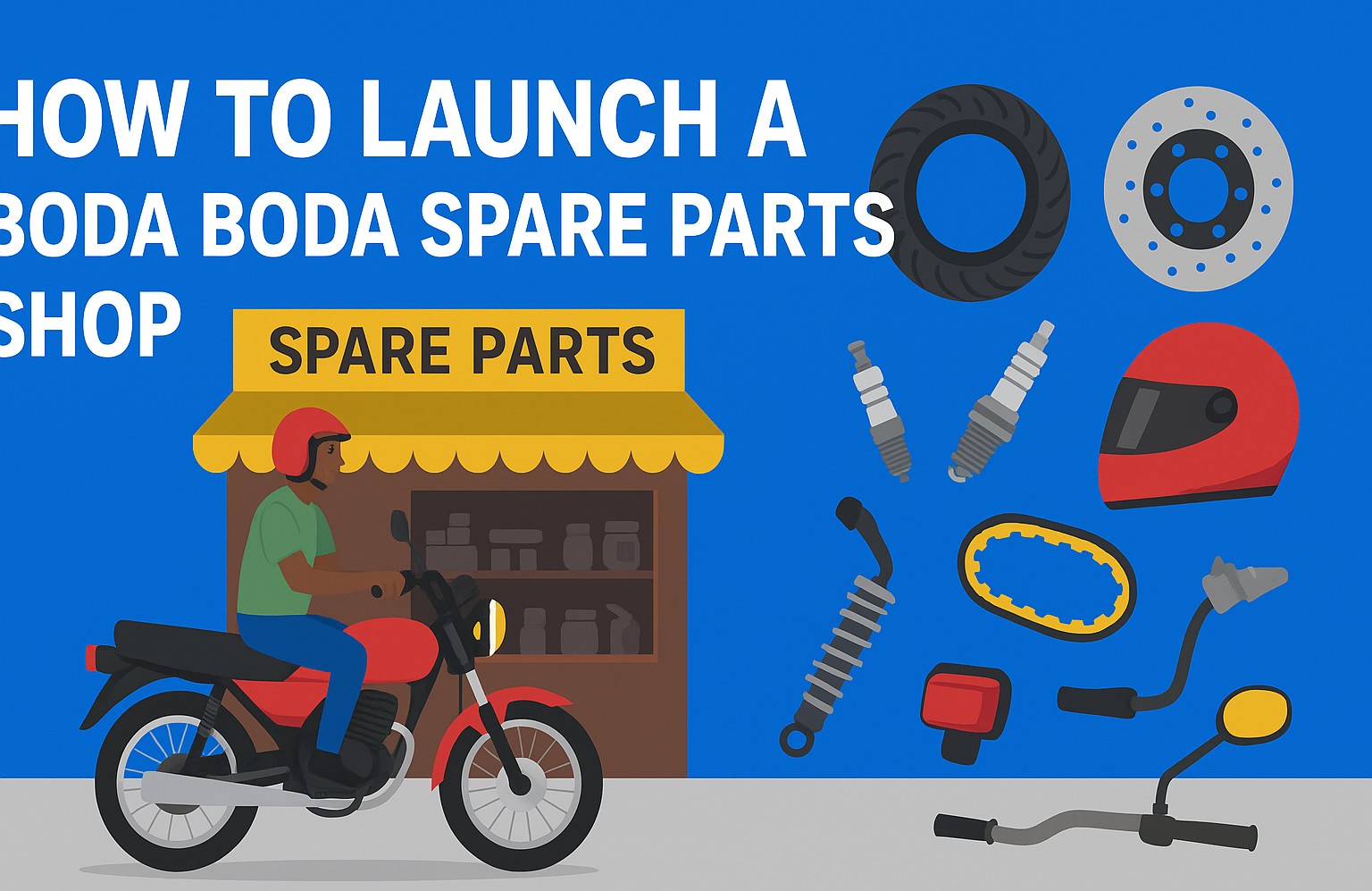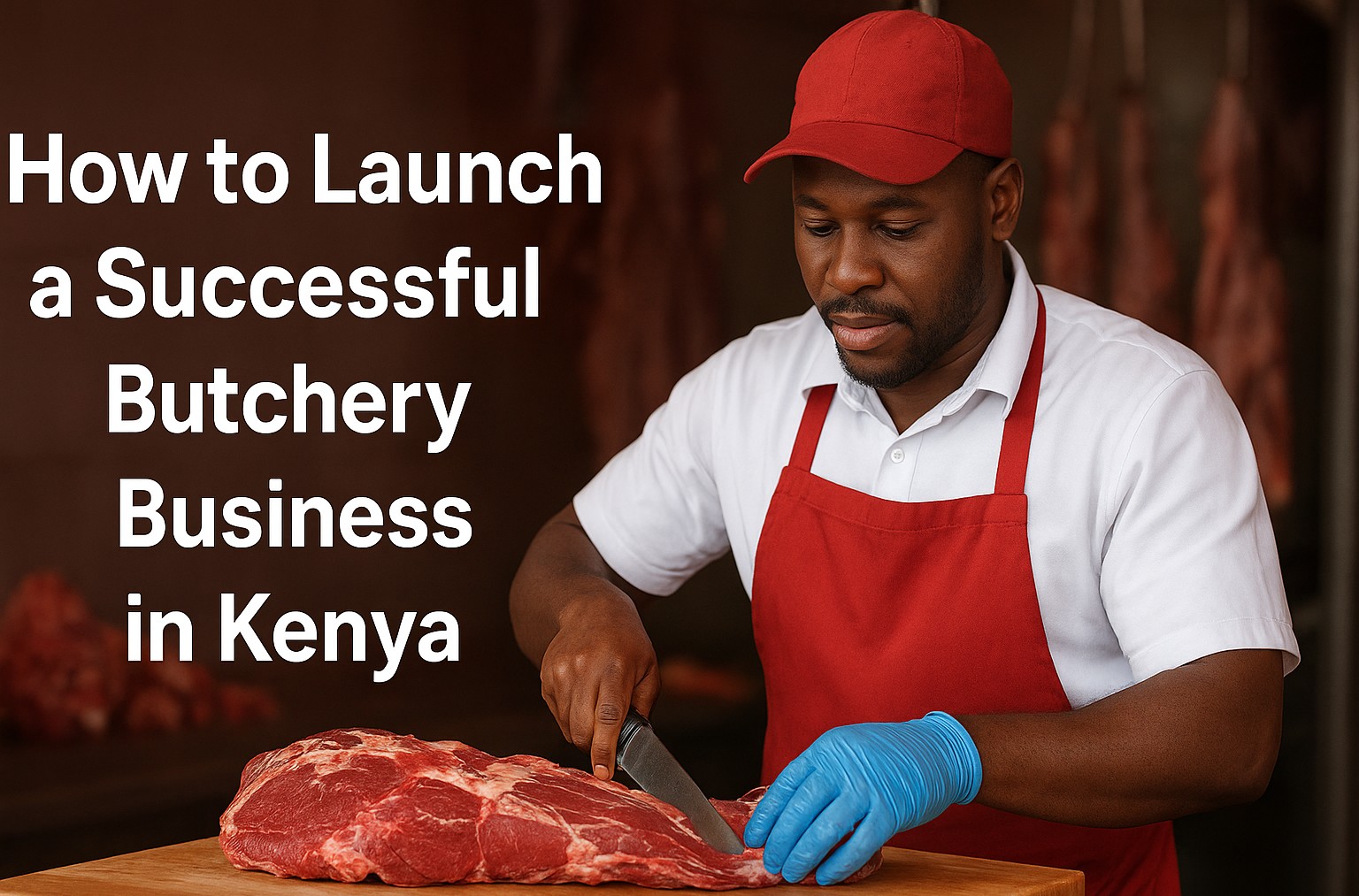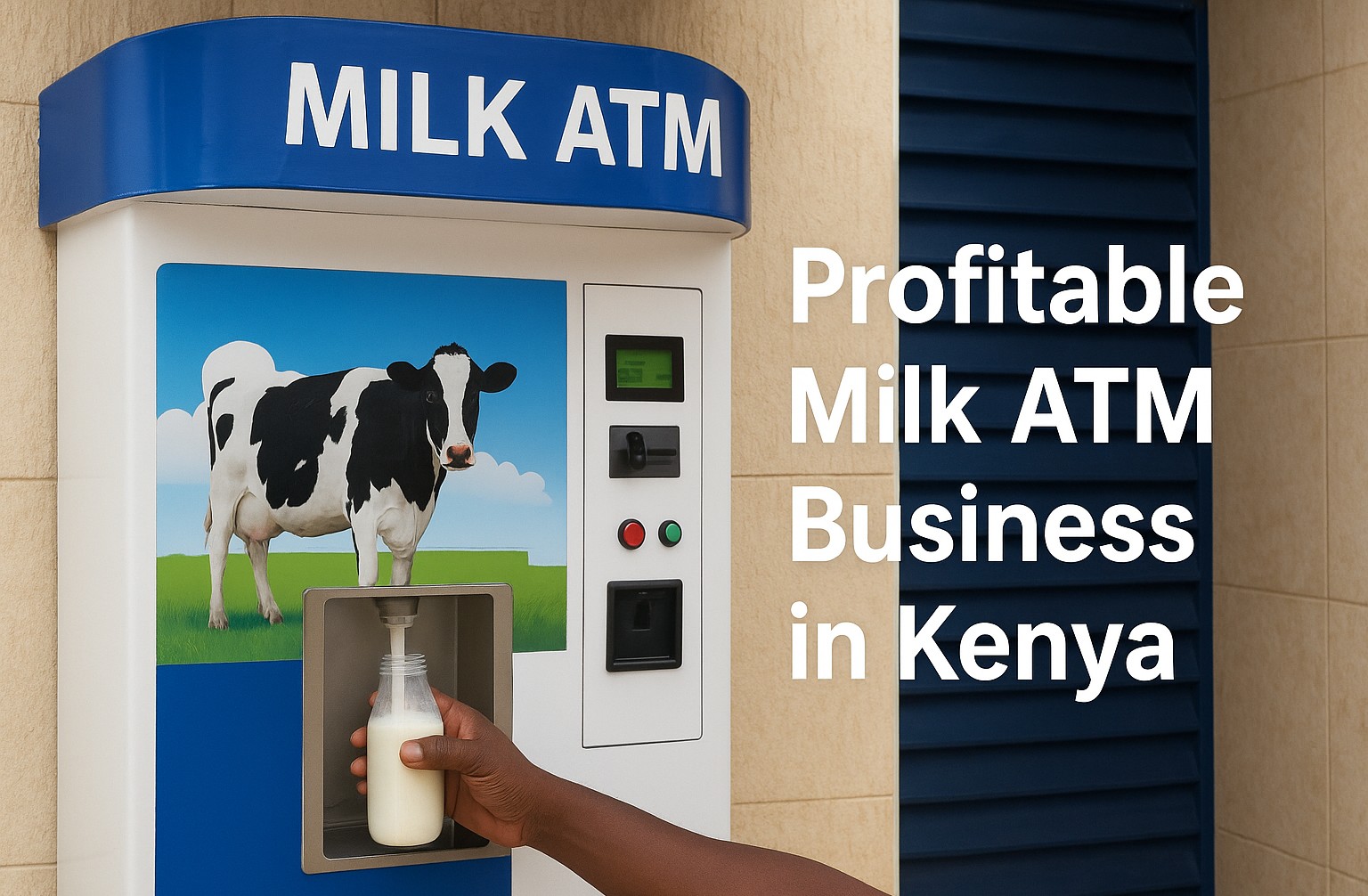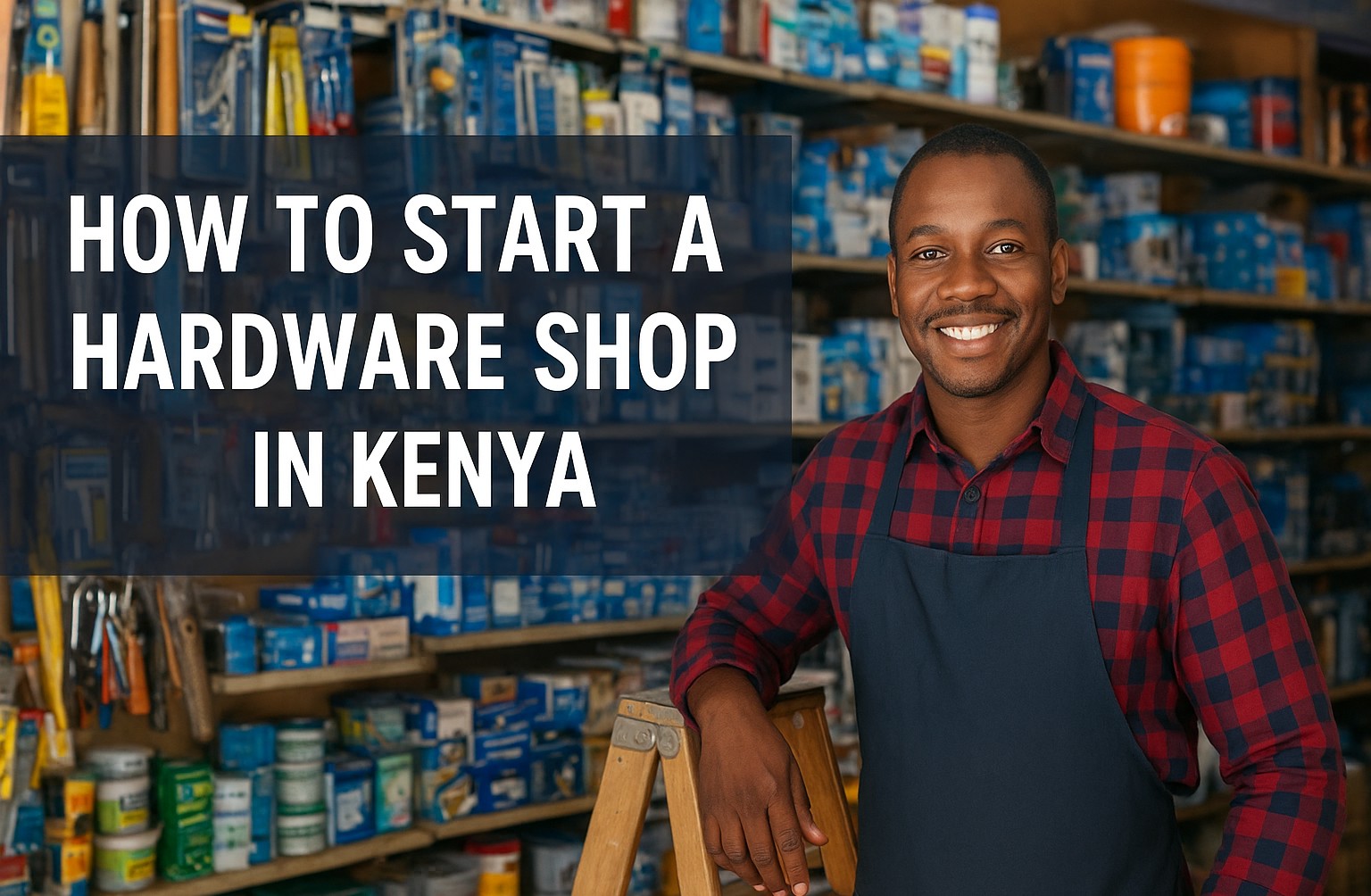

Titus Morebu
Author
How to Launch a Profitable Boda Boda Spare Parts Shop in Kenya 🚀
Start and grow a successful boda boda spare parts business: from market research and registration to sourcing stock, marketing, and scaling.
Are you ready to build a thriving boda boda spare parts shop? With Kenya’s booming motorcycle taxi industry, demand for quality replacement parts is rising fast. But success isn’t by chance — it requires smart planning, execution, and differentiation. Below is a complete, SEO-optimized roadmap to help you launch, grow, and dominate a spare parts business that ranks high online and ranks high in your local market.
Why a Boda Boda Spare Parts Shop Is a Profitable Venture
- High and growing demand: The number of motorcycles in Kenya continues to expand, fueling consistent needs for parts. Many riders replace tires, brake pads, spark plugs, and cables every few months.
- Frequent consumables: Spare parts like tubes, cables, filters, brake pads, lights, and bulbs are fast-moving goods with repeat purchase potential.
- Upsell and accessories margin: You can bundle higher-margin items—helmets, jackets, chains, electricals—to boost profits per customer.
- Local advantage: Riding the convenience of proximity, riders will buy from a shop close by versus travelling far for parts.
- Scalability: You can expand from retail to supplying mechanics, repair shops, or other spare parts shops as you grow.
Step 1: Research & Market Validation
Know your customer and competition
Spend time in motorcycle repair garages, bodaboda stands, parts markets, and observe what parts are in demand. Ask questions: which models break often, where do riders source parts, which parts run out fastest? Also, map out nearby competitors—how many spare parts shops are there, and how far do riders travel?
Choose a niche or specialization
While general parts are important, specializing (e.g. tires & tubes, electrical spares, engine parts, or specific brands) can help you stand out. As you grow, you can gradually broaden your scope.
Estimate demand & sales potential
Project how many units of your core spare parts you’ll sell per month. Use this to size your initial inventory, cash flow, and set revenue goals for the first 3 to 6 months.
Step 2: Build a Solid Business Plan
A good business plan helps you stay on course and impress lenders or partners.
- Executive summary: vision, mission, value proposition
- Products & services: list of spare parts, accessories, services (fitting, delivery)
- Market analysis: target customers, competition, pricing strategy
- Marketing & sales plan: channels, promotions, partnerships
- Operations: sourcing, stock management, staff, systems
- Financials: startup capital, projected costs, revenues, break-even analysis, cash flow
- Risk & mitigation: counterfeit parts, delayed suppliers, price volatility
Step 3: Legal Setup & Licensing
Operate above board to build credibility and avoid fines.
- Business registration: register a business name or company via relevant government portal (eCitizen or county registry).
- Single business permit / trade license: obtained from the county office, adjusted based on your location and shop size.
- Fire safety / safety compliance: ensure your premises meet safety standards.
- Tax registration (KRA PIN / VAT): ensure you can invoice properly and comply with tax law.
- Any industry-specific approvals: in some areas, automotive industry bodies may require registration or certification to sell certain parts.
Step 4: Secure a Strategic Location & Setup Shop
Choose your shop location
- Close to motorcycle repair garages and bodaboda stands
- High foot traffic roads, near transport hubs
- Accessible, visible frontage with signage
- Security—safe doors, shutters, lighting
Design shop layout & inventory display
Use sturdy shelves, bins, clear labels, and logical grouping (cables, engine parts, electricals, etc.). Keep fast-moving and small parts near the counter for easy access. Leave walking space for customers.
Procure basic shop equipment
- Lights, fans, power outlets
- Workbench for component checking and demonstration
- Point-of-sale (POS) system or simple tills, inventory software or Excel sheets
- Security (locks, CCTV, alarms)
- Packaging materials (bubbles, boxes, wrapping)
Step 5: Source Reliable Suppliers & Stock Smartly
Identify reputable wholesalers and manufacturers
Go beyond local distributors—import directly when possible to save costs. Leverage freight forwarders and cargo companies that specialize in motorcycle parts shipping. Build relationships with reliable suppliers, ask for warranties or guarantees where possible.
Quality control & authentic parts
Counterfeit parts are a major risk—inspect every batch, demand branded tags, check serial numbers, and reject suspicious items. Quality builds your brand.
Stock selection & inventory mix
Begin with fast-moving, affordable spares: light bulbs, spark plugs, cables, filters, brake pads, tires and tubes, mirrors, fenders, chains. Gradually stock engine parts, suspension, and OEM specialty parts. Use ABC classification to allocate stock capital.
Manage lead times & safety stock
Track supplier delivery times and maintain buffer stock for essential fast-moving items to avoid stockouts. Use reorder point formulas to replenish parts automatically.
Step 6: Pricing, Margins & Profit Strategy
Your pricing must balance affordability with profitability.
- Compute landed cost = cost + shipping + customs / duties + handling
- Set margin tiers (e.g., 20–35% markup on consumables, 10–20% on expensive parts)
- Bundle parts + service or parts + installation to encourage more spend
- Offer discounts or loyalty cards to repeat customers
- Use dynamic pricing—adjust based on demand, stock aging, seasonal variation
Step 7: Marketing & Customer Acquisition
Offline marketing strategies
- Distribute flyers and business cards at garages, rider stages, repair shops
- Partner with mechanics and workshops—offer referral commissions or discounts
- Place prominent signage, banners, and vehicle branding
- Offer free tests, minor services, or fitting to attract walk-ins
Digital & online marketing
- Create a simple website and optimize for local SEO (“boda boda spare parts in [town name]”)
- Use social media (Facebook, Instagram, TikTok): showcase new stock, promotions, repair tips
- List on Google My Business—add address, hours, photos, products
- Advertise via local groups, rider communities, WhatsApp groups
- Offer online ordering / delivery services to increase reach
Customer retention & service excellence
Train staff to be friendly, knowledgeable, and responsive. Keep a warranty or return policy. Provide part-testing on site. Offer loyalty cards, discounts, or maintenance advice. Word-of-mouth from satisfied riders is powerful in this industry.
Step 8: Managing Operations & Finances
Track daily sales & inventory
Use simple inventory software or spreadsheets to monitor stock levels, turnover rates, and dead stock. Regular audits help detect shrinkage or theft.
Cash flow planning
Spare parts business is capital-intensive. Reserve cash for restocks, unforeseen supplier delays, and fluctuations. Avoid overstocking slow-moving parts.
Hire and train staff
Recruit staff who understand motorcycles or are eager to learn. Train them on parts identification, customer service, upselling, and inventory control.
Set KPIs & performance metrics
- Gross margin percentage
- Inventory turnover (how many times stock cycles per month)
- Sales growth month-over-month
- Customer return rate / loyalty percentage
- Accounts receivable / credit defaults (if you offer credit)
Step 9: Scaling & Expansion Strategies
- Open additional branches in nearby towns or suburbs
- Become a wholesaler or supplier to smaller parts shops and mechanics
- Create a digital parts catalog and e-commerce store
- Offer services like fitting, repair, diagnostics, or customization
- Negotiate exclusive deals with popular motorcycle brands or importers
- Set up a mobile parts truck or service van to reach remote regions
Common Challenges & How to Overcome Them
- Counterfeit or low-quality parts: Always inspect shipments, build trusted supplier relationships, and reject dubious goods.
- Supplier delays or shipping issues: Diversify suppliers, keep buffer stock, use reliable freight forwarders.
- High competition: Focus on specialization, service excellence, and differentiated offerings.
- Cash flow crunch: Avoid overstocking, match purchases to demand, negotiate favorable credit terms from suppliers.
- Credit risk when selling on account: Set clear credit limits, require guarantees, and regularly follow up.
- Regulatory changes or taxation: Stay updated with county and national regulations, maintain compliance to avoid fines.
Case Study: Starting with Ksh 50,000
One entrepreneur launched a combined boda boda & power saw spare parts shop with just Ksh 50,000. He focused on stocking fast-moving consumables first, built trust locally, and reinvested profits back into broader inventory gradually. Within a year the shop became self-sustaining. This shows that with lean strategy and consistency, even small capital can scale. (Real-world example from a Kenyan parts trader.)
SEO & Content Tips to Rank Your Shop Online
- Write blog posts like “how to check a worn brake pad,” “top spare parts for TVS Boxer,” or “signs you need a new spark plug.” This helps attract organic traffic.
- Use keyword phrases relevant to your local market: e.g., “boda boda spare parts Nairobi,” “motorcycle spares Kisumu,” “boda parts shop near me.”
- Link to authoritative sites (e.g., Wikipedia pages on motorcycle parts, government transport department pages) using descriptive anchor text to boost credibility.
- Encourage customer reviews on Google Maps and social media to improve local ranking.
- Include product images with alt text, mobile-friendly site layout, and fast loading times.
Final Thoughts
Launching a boda boda spare parts shop in Kenya offers tremendous opportunity, especially if you execute with precision. Focus on understanding real customer needs, sourcing quality inventory, marketing smartly, and maintaining impeccable service. As demand grows, your shop can evolve from a small parts stall to a regional supplier and digital brand.
Start today: pick your location, source your first batch of reliable parts, and build your presence both offline and online. The riders need you — make your shop the go-to parts solution in your area. 🛠️
Gallery

Related Articles
3 articles
How to Launch a Successful Butchery Business in Kenya: Step-by-Step Guide 🥩
Learn how to start a butchery business in Kenya—licenses, location, suppliers, costs, marketing, risks—and build a profitable meat shop from scratch.

Profitable Milk ATM Business in Kenya: A Complete 2025 Guide 🥛
Discover how to launch and scale a milk ATM business in Kenya in 2025 — startup costs, revenue models, compliance, growth tips, and real success stories.

How to Start a Hardware Shop in Kenya: A Practical, Up-to-Date Guide 🛠️
Thinking of launching a hardware shop in Kenya? Learn how to research, register, stock, market, and manage one profitably using modern tools and strategies.